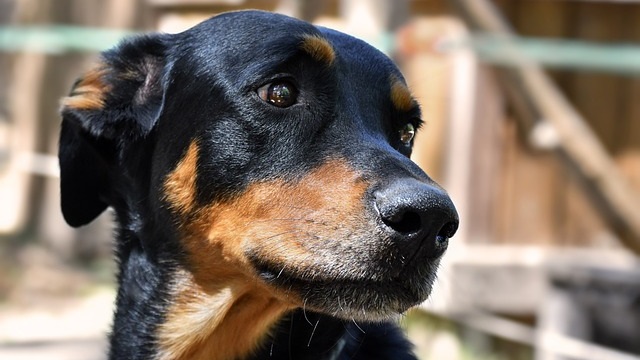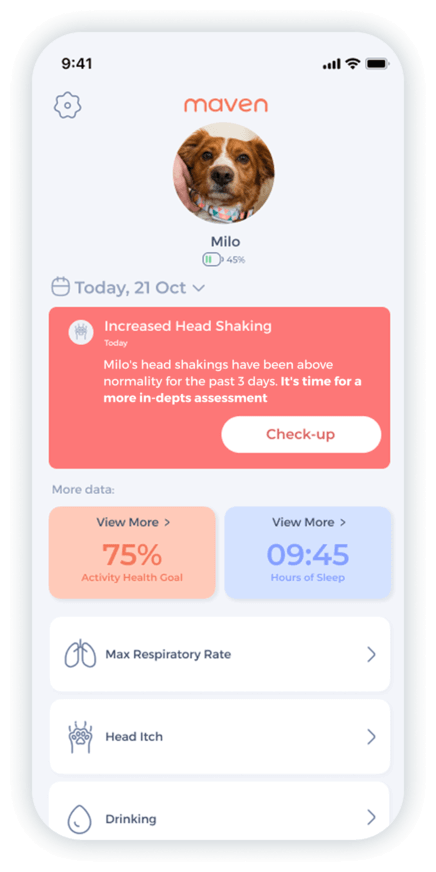Dog Poop Like Jelly With Blood — What It Means and What to Do
Do you have a habit of checking your dog’s poop regularly? You should, because dog feces tell a lot about a dog’s overall health There’s nothing more alarming for any dog owner than noticing their dog poop like jelly with blood. This type of stool often appears as a dark, mucus-like slime with streaks of red, which may indicate inflammation, infection, or digestive issues. Although this symptom may be serious, early intervention can significantly improve a dog’s chances of recovery.
In this article, we’ll explore the possible causes behind this concerning sign, outline immediate steps you should take, and offer guidance on how to monitor your dog’s health effectively to act proactively.
- Monitoring your dog's stool can indicate serious health issues, like inflammation or infection.
- Blood in stool may signify conditions like Hemorrhagic Gastroenteritis or colitis, requiring immediate veterinary attention.
- Tools like Maven Pet assist in early health issue detection and tracking your dog's well-being effectively.
Possible Causes and Common Medical Conditions

If you are wondering, “Why does my dog have bloody diarrhea?” it is of the utmost importance to understand potential causes so that you can respond appropriately. Many reasons can lead to a dog pooping blood, from worms, injuries, and gastroenteritis to food allergies, stress, Addison’s disease, and cancer.
Hemorrhagic Gastroenteritis (HGE)
HGE is a serious condition that often shows up as jelly-like blood in a dog’s stool. It typically looks like strawberry jam and is sometimes accompanied by vomiting. This happens because of severe inflammation in the digestive tract, which causes the lining of the intestines to shed blood and mucus.
HGE can develop rapidly and include other symptoms like lethargy and dehydration. Without prompt treatment, this condition can pose a deadly risk to your dog’s health. It’s worth noting that small and toy breads under five years are most prone to HGE.
Colitis
Colitis is the inflammation of the colon often caused by infections, sudden dietary changes, stress, or parasites. It disrupts the normal function of the colon and leads to increased mucus production.
As the colon lining becomes irritated, blood may also appear in the stool, giving it a jelly-like appearance. This combination of mucus and blood is a common sign of colitis and can cause discomfort and distress for your dog if left untreated.
Symptoms of dog colitis typically include vomiting, jelly-like feces with blood, foul-smelling feces, and difficulty defecating.

Bacterial, Viral, or Parasitic Infections
Bacterial, viral, and parasitic infections can cause inflammation in the intestines, result in blood and mucus in the stool, and affect your pet wellness drastically. Giardia, a protozoan parasite, disrupts the digestive system and triggers diarrhea with mucus and, sometimes, blood. This is also the case with parasites like hookworms, coccidia, and whipworms.
Certain bacteria, like Salmonella and Campylobacter, infect the gastrointestinal tract and often lead to bloody, jelly-like stool along with vomiting and diarrhea.
When it comes to viral infections, parvovirus is extremely dangerous (especially to puppies and unvaccinated dogs) and often causes bloody stools.
Each of the above-discussed infections requires prompt veterinary treatment to prevent dehydration and further complications.
“I got the Maven sensor for my 14-year-old Chihuahua mix with heart and trachea issues. It gave me back peace of mind – I can track her RRR, BPM, drinking, and activity anytime and know instantly if something’s wrong. Highly recommend!”

★★★★★
Chiara De Luca
Titti
Immediate Actions: When to Seek Immediate Veterinary Care
When you notice your dog’s poop looks like jelly with blood, it’s understandable to feel concerned. However, the appropriate response depends on your dog’s overall condition. In some cases, it can be a single occurrence of blood in the stool caused by a dietary glitch, if you will, and they continue to act normally.
If your dog has diarrhea with blood but acts fine, you may not need to rush to the vet immediately. Simply monitor their behavior, ensure they stay hydrated, identify the appearance and the amount of blood, and watch for any changes over the next 24 – 48 hours.
However, certain red flags indicate the need for immediate veterinary care. If the blood and mucus in your dog’s stool persist longer than 24 hours or if additional signs like lethargy, vomiting, severe abdominal pain, neurological symptoms, pale gums, or loss of appetite appear, it’s important to take your dog to the vet without delay.
Treatment options for this kind of health issue usually include stool exam, routine blood work, abdominal ultrasound, giardia and parvo SNAP tests. Then, the vet will recommend the necessary medication, diarrhea treatment, change in diet, fluids to treat dehydration, or even surgery.
By being aware of these signs, you can make an informed decision about whether to wait and observe or seek immediate care. If you act promptly when necessary, you can help your dog recover more quickly and avoid potential complications.
How Maven Pet Helps
Maven Pet is a proactive tool designed to monitor and track your pet’s health and offer peace of mind for concerned dog owners.


Monitor heart rate, respiratory rate, activity & rest, drinking, itch behavior.
When my dog is pooping blood and diarrhea, Maven Pet can assist by providing valuable insights into your dog’s overall well-being and help you spot any potential health issues early. This tool secures:
- 24/7 Tracking: Maven Pet allows you to track your dog’s activity, rest levels, and water intake continuously. With features like user-created journal entries or photos, it can even help you monitor changes in stool consistency and deliver a comprehensive picture of your dog’s health.
- Personalized Health Monitoring: This pet smart collar provides detailed data on your dog’s health and empowers you to track patterns and identify concerning changes as they happen.
- Clinical Benefits: Continuous health data from Maven Pet enables early diagnosis of issues and allows for faster treatment and better outcomes. Once you identify trends and potential risks, Maven Pet can help you with timely veterinary intervention and, as a result, improve your dog’s recovery chances when symptoms like blood in the stool appear.
Conclusion

Dog poop like jelly with blood can sometimes result from minor causes, but it can also point to life-threatening conditions that need immediate attention. It’s essential for pet owners to monitor their dog’s health (and poop) consistently and recognize when symptoms like blood in dog diarrhea require veterinary care.
Other steps they can take include parasite prevention, keeping up-to-date on vaccinations, avoiding switching food, and keeping dangerous chemicals and items out of their dogs’ reach.
If you are one of them, tools like Maven Pet can help you track your dog’s activity, water intake, and stool consistency so that you can detect any potential health issues. Don’t wait for symptoms to worsen! Instead, take proactive action to keep your furry friend happy and healthy.
Maven Pet focuses on improving the quality of life of our pets with technology, using artificial intelligence (AI) to enable proactive pet care. By accurately collecting and monitoring pet data 24/7 and flagging any irregularities, Maven Pet empowers pet parents and veterinarians to stay ahead of potential health issues, ensuring the well-being and longevity of our beloved companions.




